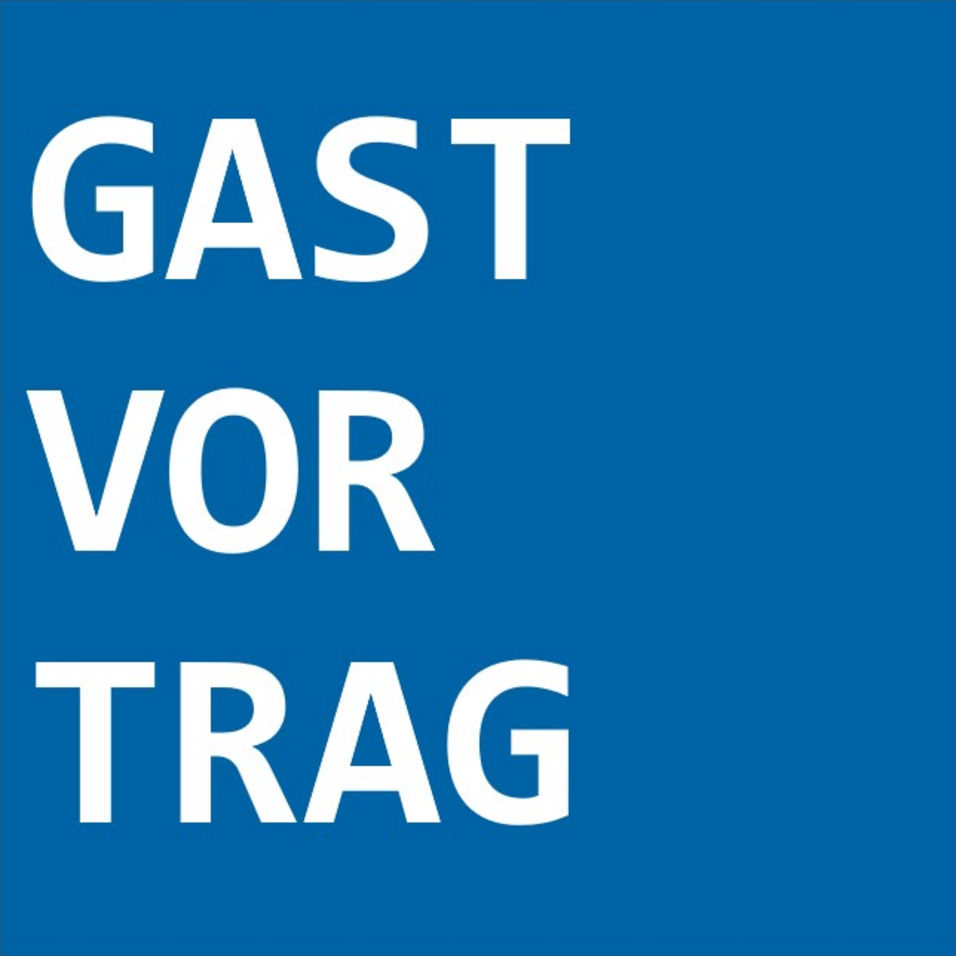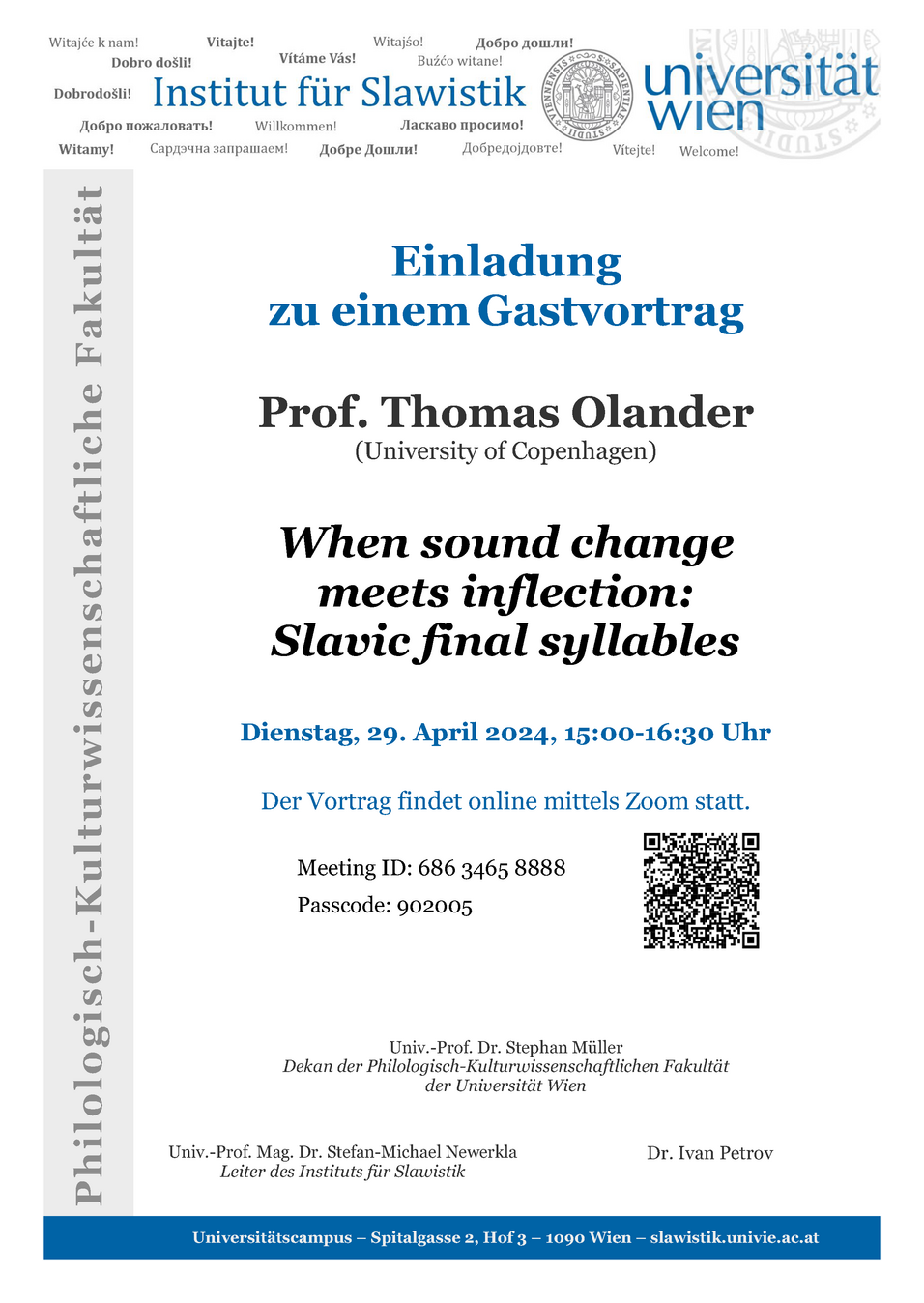Termin: Dienstag, 29. April 2025, 15:00 Uhr
Ort: Online mittels Zoom:
https://univienna.zoom.us/j/68634658888?pwd=iapuBpa2aHtWmcCJx5LlarlAr4xP0P.1
Meeting ID: 686 3465 8888
Passcode: 902005
While Slavic is generally a rather conservative Indo-European language with regard to both phonology and inflection, some prominent forms in the inflectional system do not lend themselves to a straightforward interpretation, e.g. o-stem nominative singular ending -ŭ, ah₂-stem genitive singular -y and ah₂-stem nominative plural -y. With the discovery of the birchbark documents written in the Old Novgorod dialect, things seem to get even more difficult: the corresponding endings found here are, surprisingly, -e, -ě and -ě.
In this lecture I present the results of my earlier investigation of these and related forms (Olander 2012), written before I became familiar with the strikingly similar conclusions by Viredaz (2009). The Old Novgorod material, rather than being yet another set of obscure problems we have to live with, provides the key to understanding what happened between PIE and the attested Slavic dialects. Almost all the forms in question – both those of the “classical” Slavic dialects and those of the Old Novgorod dialect – are in fact the expected outcomes of the corresponding PIE proto-forms, having arisen as the result of a pre-Proto-Slavic change of short and long *a to *ə in final syllables closed by a fricative: pre-Proto-Slavic *ā̆ > Proto-Slavic ə̄̆ /_ (R)S (where R = resonant, S = fricative).
Dr. Ivan Petrov
Univ.-Prof. Mag. Dr. Stefan-Michael Newerkla
Leiter des Instituts für Slawistik
Univ.-Prof. Dr. Stephan Müller
Dekan der Philologisch-Kulturwissenschaftlichen Fakultät der Universität Wien


